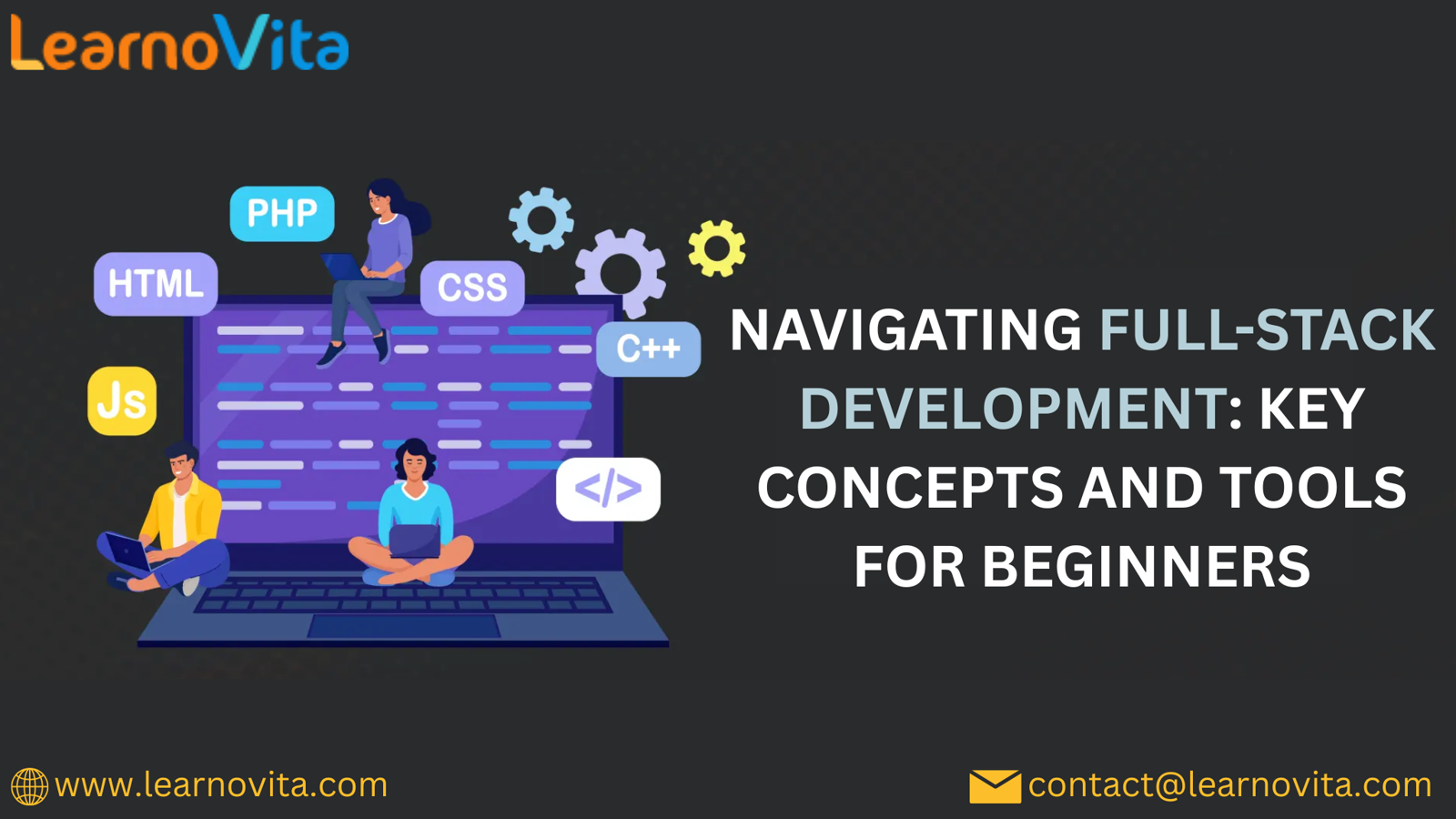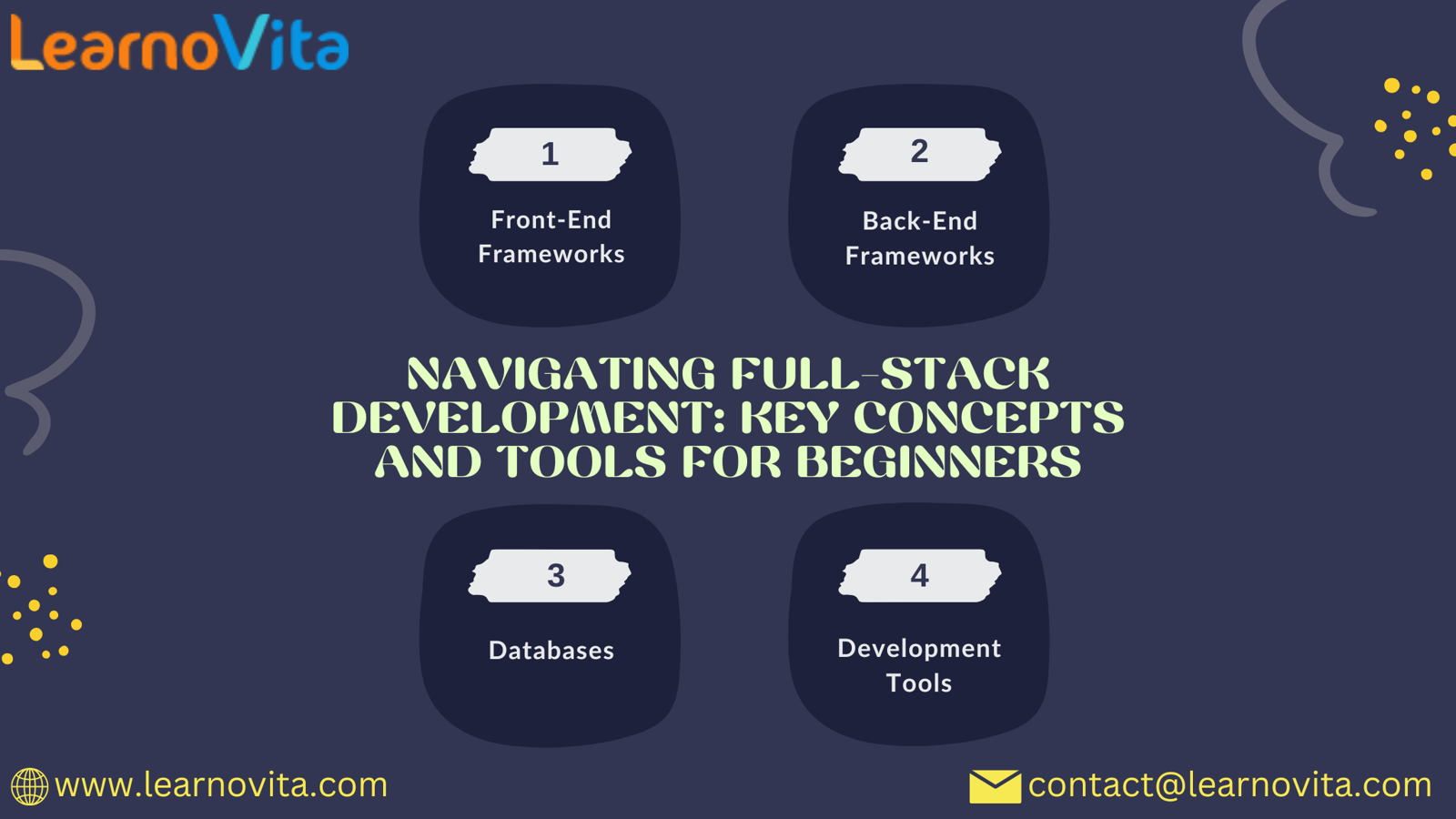Navigating Full-Stack Development: A Beginner’s Guide to Key Concepts and Tools
Full-stack development is essential for creating complete web applications, merging both front-end and back-end technologies. For those just starting out, grasping fundamental concepts and essential tools is crucial for success as a full-stack developer. This guide will introduce you to these core elements, helping you kickstart your full-stack development journey.
If you want to excel in this career path, then it is recommended that you upgrade your skills and knowledge regularly with the latest Full Stack Developer Online Training.

Core Concepts of Full-Stack Development
1. Front-End Development
The front end includes everything users directly interact with in their web browsers. Key technologies in this area consist of:
- HTML (HyperText Markup Language): The bedrock that structures web content and web pages.
- CSS (Cascading Style Sheets): Manages the presentation and layout of web pages, influencing colors, fonts, and overall aesthetics.
- JavaScript: This programming language brings interactivity to web pages, enabling dynamic updates and user engagement.
Modern front-end frameworks such as React, Angular, and Vue.js enhance JavaScript’s capabilities, allowing for the construction of intricate user interfaces.
2. Back-End Development
The back end refers to the server-side of a web application, responsible for processing requests, managing databases, and executing business logic. Key components include:
- Server: Hosts the application and handles incoming requests, often utilizing technologies like Node.js, Django, or Ruby on Rails.
- Database: This component stores the application’s data, with popular options including MySQL, PostgreSQL, and MongoDB, each offering unique advantages based on your needs.
- Server-Side Languages: Common languages for back-end development include JavaScript (with Node.js), Python (with Django or Flask), Ruby (with Ruby on Rails), and PHP.
A solid understanding of how to create and interact with a database via an API (Application Programming Interface) is fundamental for full-stack developers.
3. Version Control Systems
Version control systems, particularly Git, are essential for managing code changes. They facilitate collaboration, help maintain different versions of a project, and enable quick recovery from errors. Platforms like GitHub and GitLab further support collaborative development and code sharing.
4. RESTful APIs
RESTful APIs are vital for enabling communication between the front end and back end of your application. These interfaces utilize standard HTTP methods—GET, POST, PUT, and DELETE—to conduct CRUD (Create, Read, Update, Delete) operations on data, ensuring a smooth user experience.
With the aid of Best Software Training Institute programs, which offer comprehensive training and job placement support to anyone looking to develop their talents, it’s easier to learn this tool and advance your career.

Key Tools and Frameworks
Front-End Frameworks
-
React: A JavaScript library created by Facebook, designed for building user interfaces. Its component-based architecture promotes the reuse of components, making it ideal for single-page applications (SPAs).
-
Angular: A robust framework from Google aimed at building powerful web applications, offering a structured approach through its templating and dependency injection systems.
-
Vue.js: A progressive framework that can be easily integrated into existing projects, providing a flexible architecture suited for smaller applications or gradual improvements.
Back-End Frameworks
-
Express.js: A minimal yet versatile Node.js web application framework that offers a comprehensive set of features, particularly suited for developing RESTful APIs.
-
Django: A high-level Python web framework that encourages rapid development and practical design, with built-in functionalities for authentication, ORM, and an administrative panel.
-
Ruby on Rails: A full-stack framework for Ruby that emphasizes productivity and simplicity, following a convention-over-configuration principle that allows developers to focus more on their code rather than boilerplate.
Databases
-
MySQL: A widely-used open-source relational database management system known for its data integrity and support for complex queries.
-
PostgreSQL: An advanced relational database recognized for its robustness and strong compliance with SQL standards.
-
MongoDB: A NoSQL database that organizes data in JSON-like documents, making it perfect for managing vast amounts of unstructured data.
Development Tools
-
Code Editors: Tools like Visual Studio Code, Sublime Text, and Atom offer an intuitive environment for coding and project management.
-
Package Managers: Tools such as npm (Node Package Manager) and Yarn facilitate efficient management of project dependencies.
-
Postman: A popular tool for testing APIs, simplifying the process of sending requests and analyzing responses during development.
Conclusion
Embarking on your full-stack development journey can be both exhilarating and challenging. By understanding essential concepts—such as front-end and back-end development, version control, and RESTful APIs—you’ll establish a strong foundation for your skills. Additionally, familiarizing yourself with key tools and frameworks will equip you with the technical know-how to bring your web applications to life. Start your learning adventure today, and you’ll be well-prepared to tackle the challenges of full-stack development.
- Questions and Answers
- Opinion
- Motivational and Inspiring Story
- Technology
- Live and Let live
- Focus
- Geopolitics
- Military-Arms/Equipment
- Sicherheit
- Economy
- Beasts of Nations
- Machine Tools-The “Mother Industry”
- Art
- Causes
- Crafts
- Dance
- Drinks
- Film/Movie
- Fitness
- Food
- Spiele
- Gardening
- Health
- Startseite
- Literature
- Music
- Networking
- Andere
- Party
- Religion
- Shopping
- Sports
- Theater
- Health and Wellness
- News
- Culture

